Unpacking the “Portuguese girl” summer trend
Or some loose thoughts from my most recent adventures un-shopping in London
Dear fashion friends,
It’s been a minute since I last wrote some “loose thoughts” about anything related to fashion! 😅 You see, with all the craziness of last month (which I attempted to summarize in last week’s monthly updates) I really struggled to sit down and write. So much so that I spent the first almost half hour after sitting down to write this without an idea of where to start.
Funny, because my brain has been more active than ever lately—as I somehow thrive in a life of constant movement and changing routines.
Funny, too, because I’ve been increasingly exposed to the fashion world—meaning I’ve been having more and more thoughts as I react to what I see in the news, the streets, window shops and, of course, students’ final projects and degree shows.
But then I remembered an article I read last week as I prepared our bi-weekly news digests for The Fashion and Race Database. It appeared in Vogue, under the title “Yes, tinned fish have gotten chic. But how healthy are they?”
In my recent (un)shopping trips to study what’s going on in retail these days, I also have seen tinned fish are indeed everywhere. I’ve seen them in phone cases, t-shirts, and dresses. So too are tropical fruits, sorbets, flowers, and blue-and-white tiles.
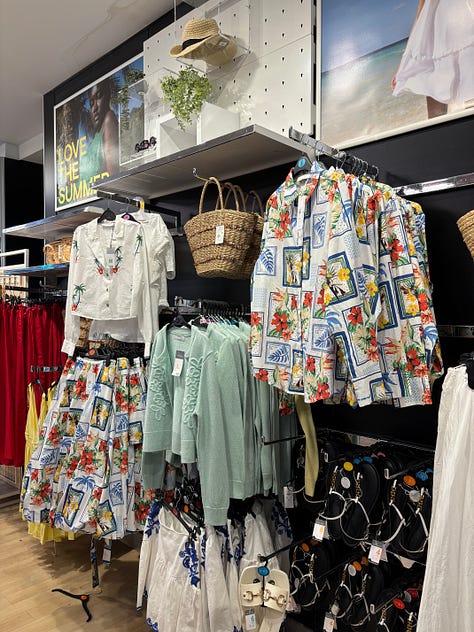
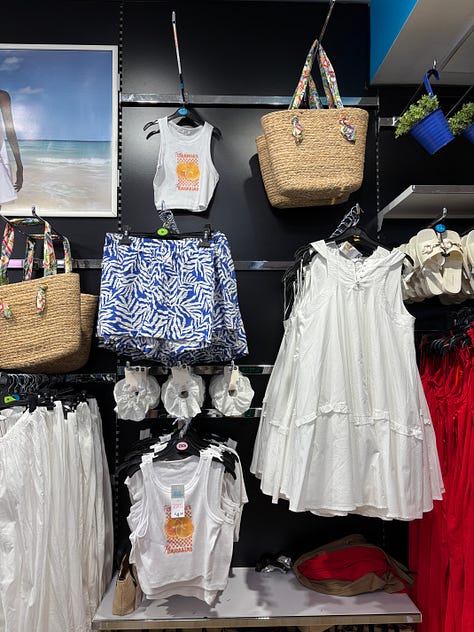
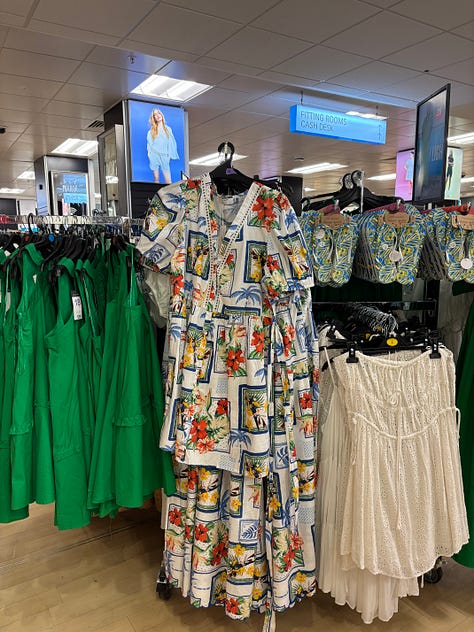
And they were in one of the most interesting things I saw at Graduate Fashion Week: the so-called “Portuguese girl” trend, which is not entirely Portuguese, by the way.
I first stumbled upon it as I walked out—exhausted and somehow also incredibly activated—after a 12-hour-long installation and opening day. Right before the exit, hanging in front of a selection of pieces from Next’s current collection, my eye caught a one-piece swimsuit with toucans, palm trees and the words “Tapas,” “La siesta” and “Puerto Rico” over a white and blue striped ground. I snapped a quick shot (not very admirable for its quality, as you can see) and promised myself to investigate further.
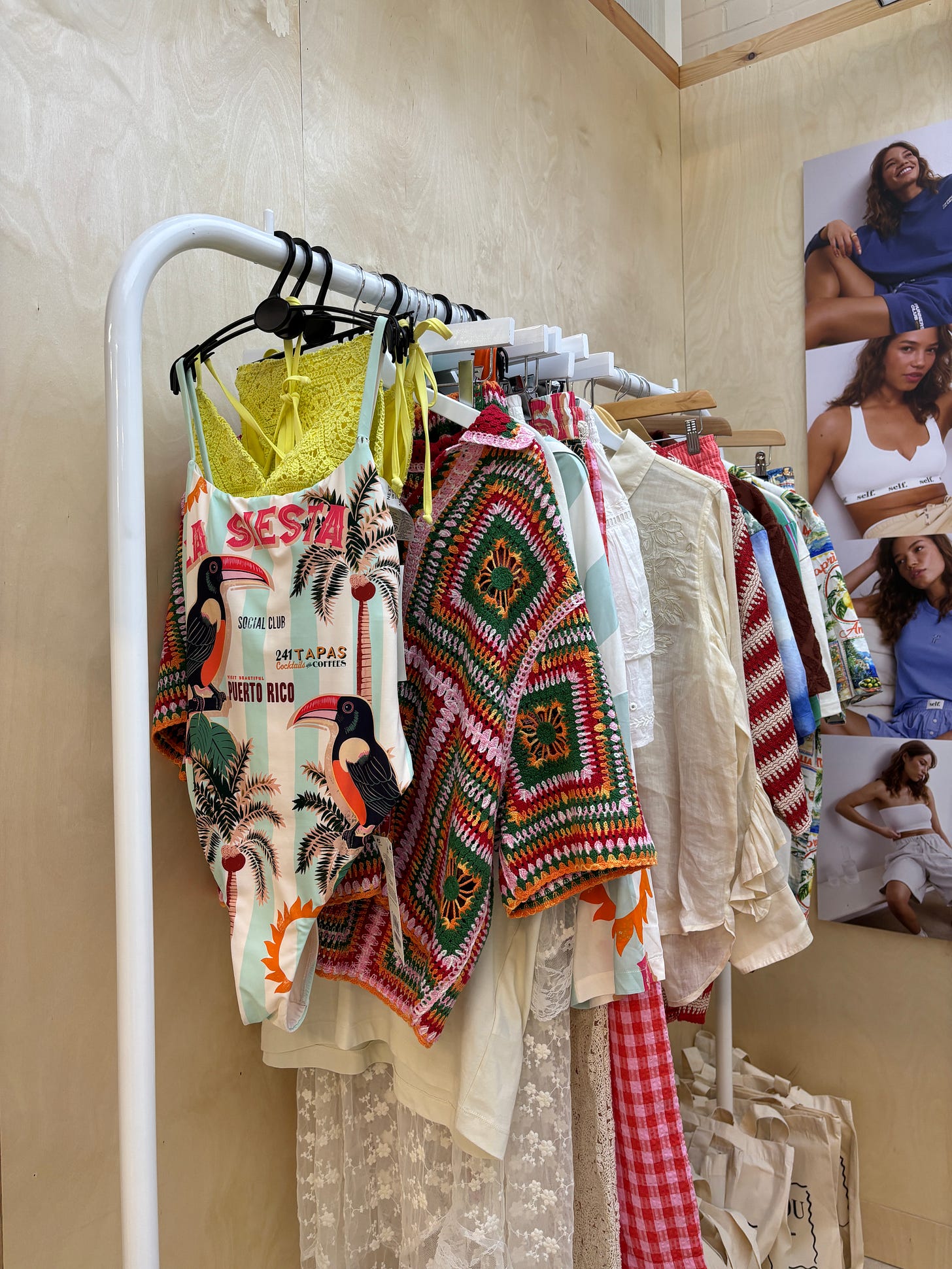
When I did and realized that this swimsuit is part of a so-called “Portuguese girl” collection, my brain started spiraling.
Since when is Puerto Rico part of Portugal? Are tapas a Portuguese thing or just Spanish? And why, oh why, does the word “siesta” need to be preceded by the article “la” as if we were in intro-level Spanish class? (As a native Spanish speaker myself, I rarely use articles when simply dropping words because they are implicit—though I’m willing to consider this is just my personal preference/pet peeve if that gives a little bit of grace to an otherwise terrible design concept.)
Conflating Spanish and Portuguese cultures and including a former Spanish colony in the Caribbean into one single concept blandly named “Portuguese girl” is nothing less than yet another case of exotization for fashion’s profit.
It demonstrates awareness of trends, as big agencies such as WGSN had been forecasting “playful” and nostalgic, food-inspired prints for this summer for a while. It demonstrates research into rising topics in social media, including, for example, the #FishermanCore and #FishermanStyle trends on TikTok.
But it also demonstrates an entire absence of attention to some of the most basic facts of the cultures that guide the collection—not to say disrespect.
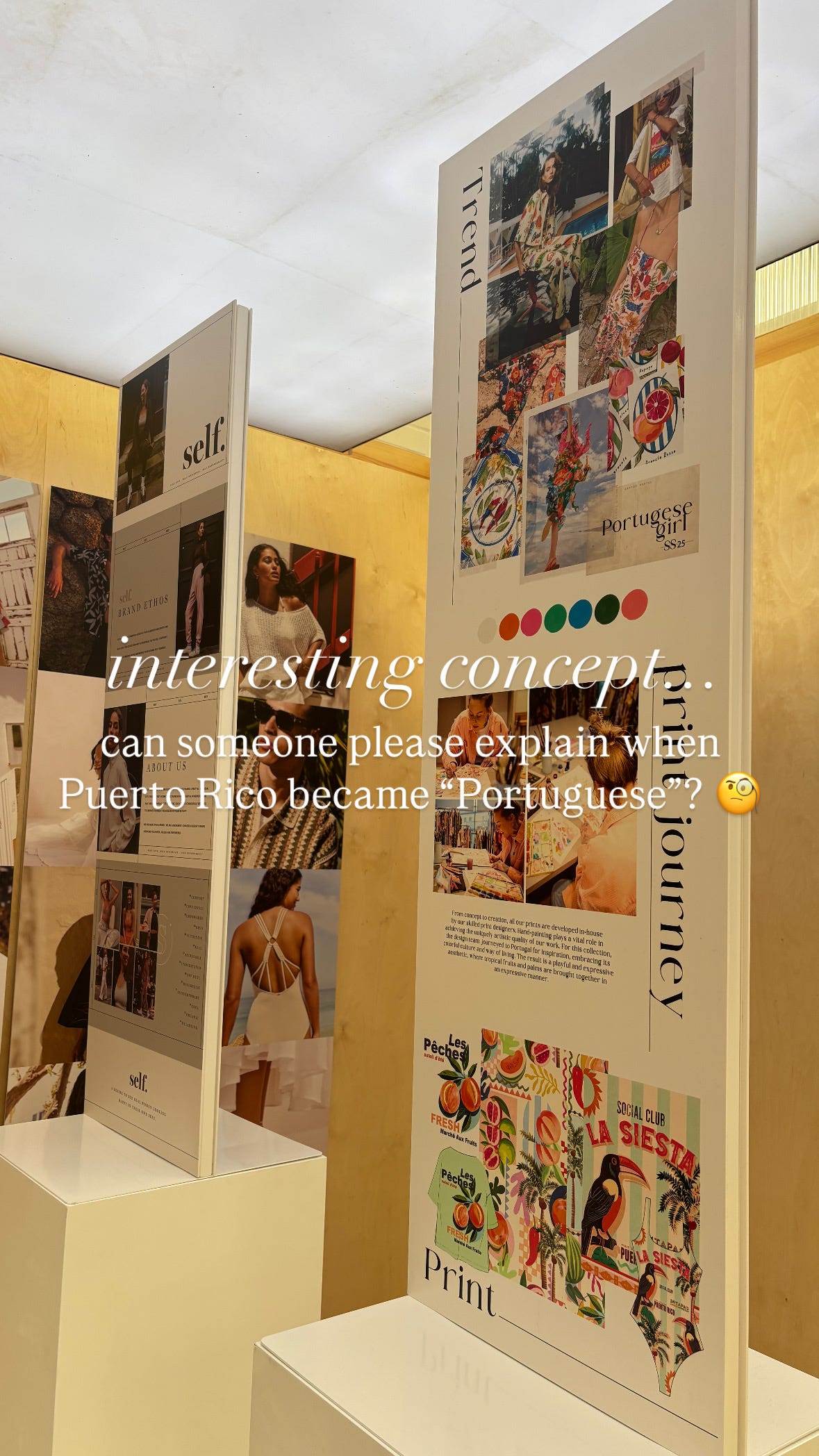
I could go into the history of “exotic” trends, but for now I’ll just say that in this case it has to do with flattening cultural diversity and simply merging anything and everything that is perceived as foreign or “other” into one single, often colorful and “playful” aesthetic.
(I won’t go into the details of exoticization in fashion today, but do let me know if you’re interested in more cause I of course have a lot to say about this topic.)
But there’s another idea that has been lingering in my mind around this whole “Portuguese” trend.
I wonder if the increased attention to tinned fish, and canned food more generally, is also part of a (soft? implicit?) reaction to ongoing economic difficulties and the threat(s) of conflict.
While tinned fish are indeed staples in many cultures, as the above-cited Vogue article explains, canned food is also a symbol of economic scarcity and wartime restrictions.
So are we, as a society, (perhaps subconsciously) trying to make canned food more appealing as we head into a period of heightened economic and sociopolitical uncertainty? Or is this just another expression of fashion nostalgia and I am—as usual—overthinking it?
Nostalgia in fashion, though, was surprisingly one of the recurring topics of conversation with my students, especially those in Fashion Communications and Styling, and it might merit a reflection of its own… so I’ll come back to this topic next time.
Before then, though, please let me know what you think about the tinned fish trend, exoticism, and otherness in fashion.
As always, thank you, thank you for reading and joining the conversation!
Until next time,
—L 🩷




